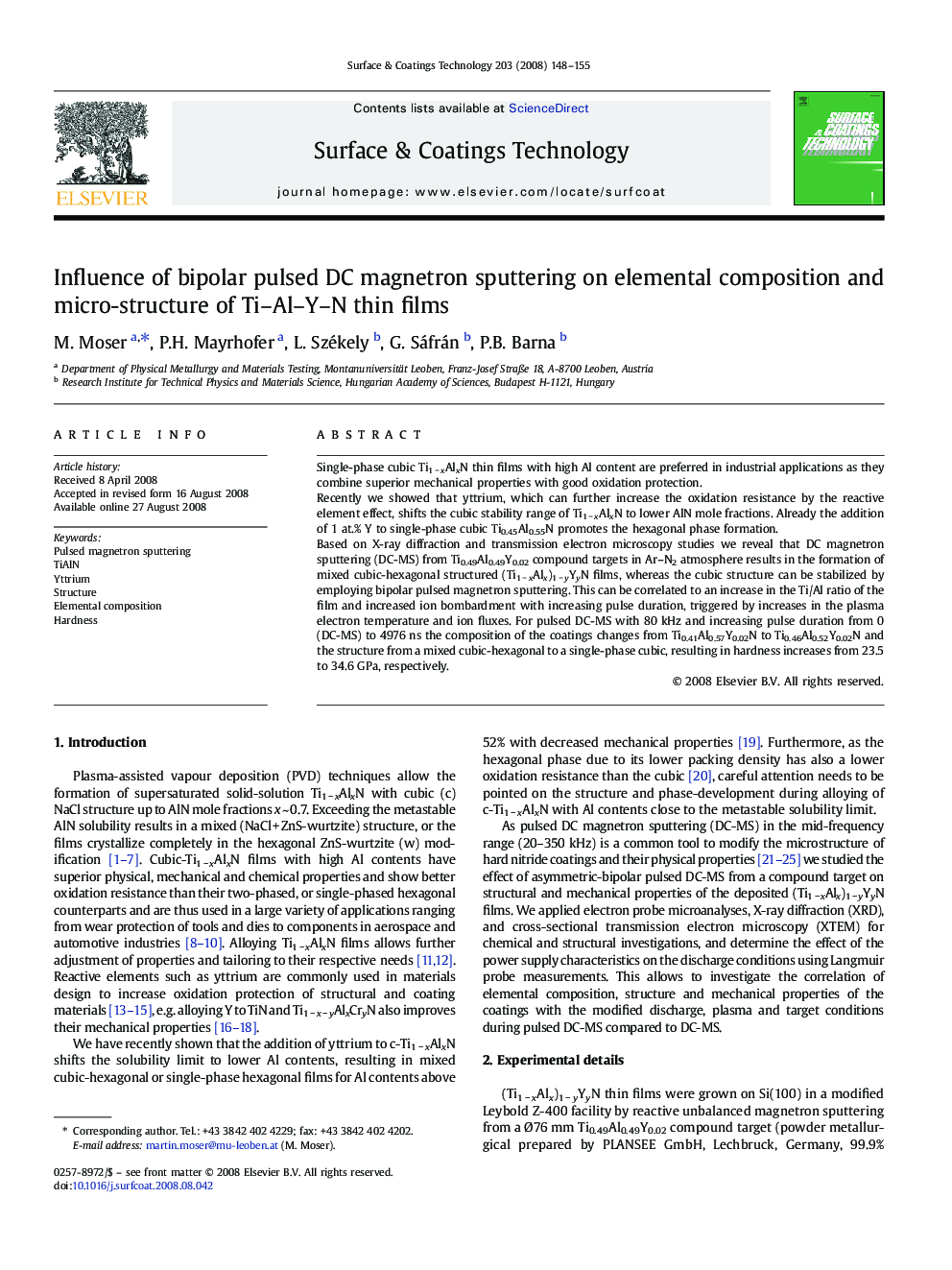| Article ID | Journal | Published Year | Pages | File Type |
|---|---|---|---|---|
| 1661270 | Surface and Coatings Technology | 2008 | 8 Pages |
Abstract
Based on X-ray diffraction and transmission electron microscopy studies we reveal that DC magnetron sputtering (DC-MS) from Ti0.49Al0.49Y0.02 compound targets in Ar-N2 atmosphere results in the formation of mixed cubic-hexagonal structured (Ti1 â xAlx)1 â yYyN films, whereas the cubic structure can be stabilized by employing bipolar pulsed magnetron sputtering. This can be correlated to an increase in the Ti/Al ratio of the film and increased ion bombardment with increasing pulse duration, triggered by increases in the plasma electron temperature and ion fluxes. For pulsed DC-MS with 80 kHz and increasing pulse duration from 0 (DC-MS) to 4976 ns the composition of the coatings changes from Ti0.41Al0.57Y0.02N to Ti0.46Al0.52Y0.02N and the structure from a mixed cubic-hexagonal to a single-phase cubic, resulting in hardness increases from 23.5 to 34.6 GPa, respectively.
Related Topics
Physical Sciences and Engineering
Materials Science
Nanotechnology
Authors
M. Moser, P.H. Mayrhofer, L. Székely, G. Sáfrán, P.B. Barna,
